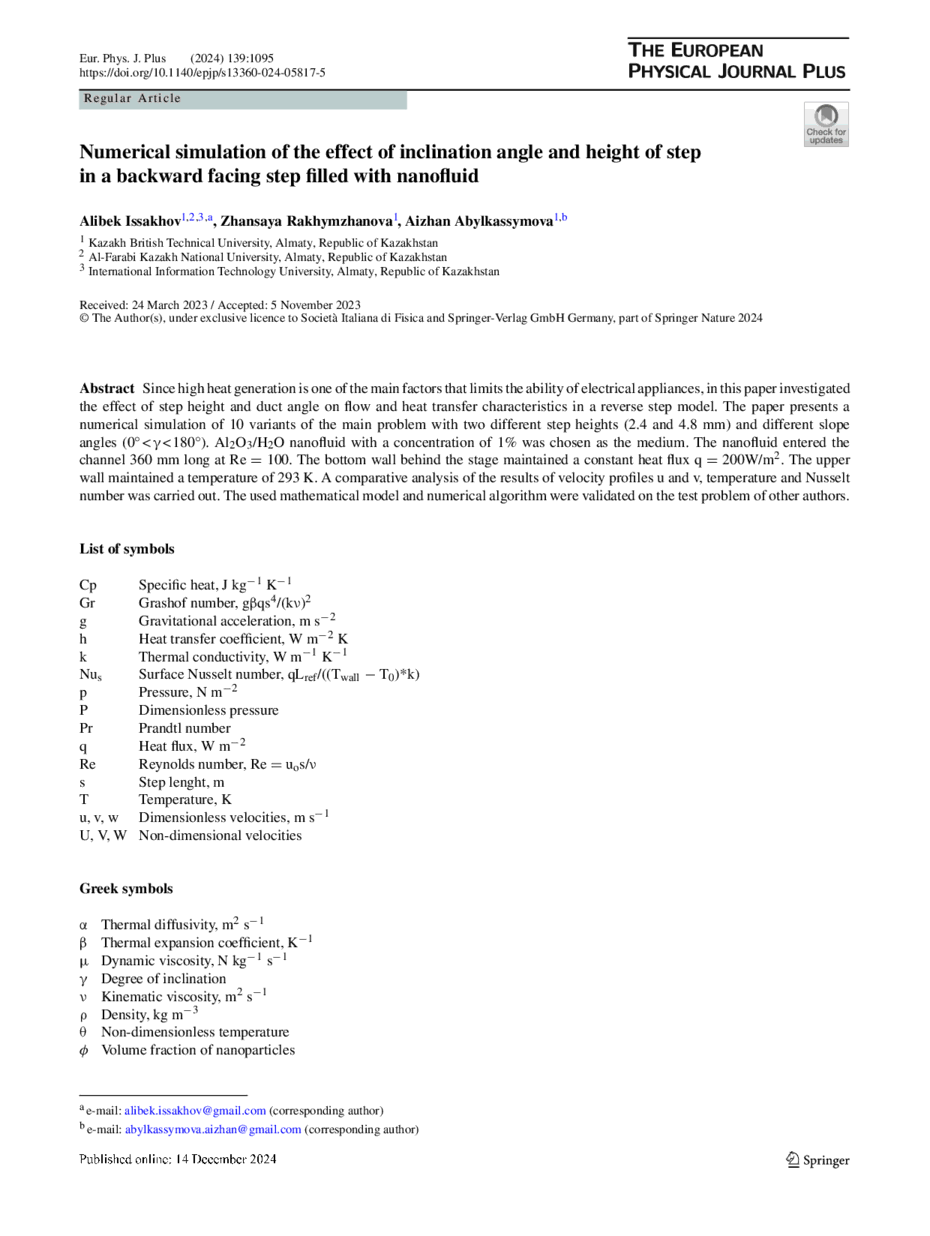https://doi.org/10.1140/epjp/s13360-024-05817-5
Regular Article
Numerical simulation of the effect of inclination angle and height of step in a backward facing step filled with nanofluid
1
Kazakh British Technical University, Almaty, Republic of Kazakhstan
2
Al-Farabi Kazakh National University, Almaty, Republic of Kazakhstan
3
International Information Technology University, Almaty, Republic of Kazakhstan
a
alibek.issakhov@gmail.com
b
abylkassymova.aizhan@gmail.com
Received:
24
March
2023
Accepted:
5
November
2023
Published online:
14
December
2024
Since high heat generation is one of the main factors that limits the ability of electrical appliances, in this paper investigated the effect of step height and duct angle on flow and heat transfer characteristics in a reverse step model. The paper presents a numerical simulation of 10 variants of the main problem with two different step heights (2.4 and 4.8 mm) and different slope angles (0° < γ < 180°). Al2O3/H2O nanofluid with a concentration of 1% was chosen as the medium. The nanofluid entered the channel 360 mm long at Re = 100. The bottom wall behind the stage maintained a constant heat flux q = 200W/m2. The upper wall maintained a temperature of 293 K. A comparative analysis of the results of velocity profiles u and v, temperature and Nusselt number was carried out. The used mathematical model and numerical algorithm were validated on the test problem of other authors.
Copyright comment Springer Nature or its licensor (e.g. a society or other partner) holds exclusive rights to this article under a publishing agreement with the author(s) or other rightsholder(s); author self-archiving of the accepted manuscript version of this article is solely governed by the terms of such publishing agreement and applicable law.
© The Author(s), under exclusive licence to Società Italiana di Fisica and Springer-Verlag GmbH Germany, part of Springer Nature 2024
Springer Nature or its licensor (e.g. a society or other partner) holds exclusive rights to this article under a publishing agreement with the author(s) or other rightsholder(s); author self-archiving of the accepted manuscript version of this article is solely governed by the terms of such publishing agreement and applicable law.





